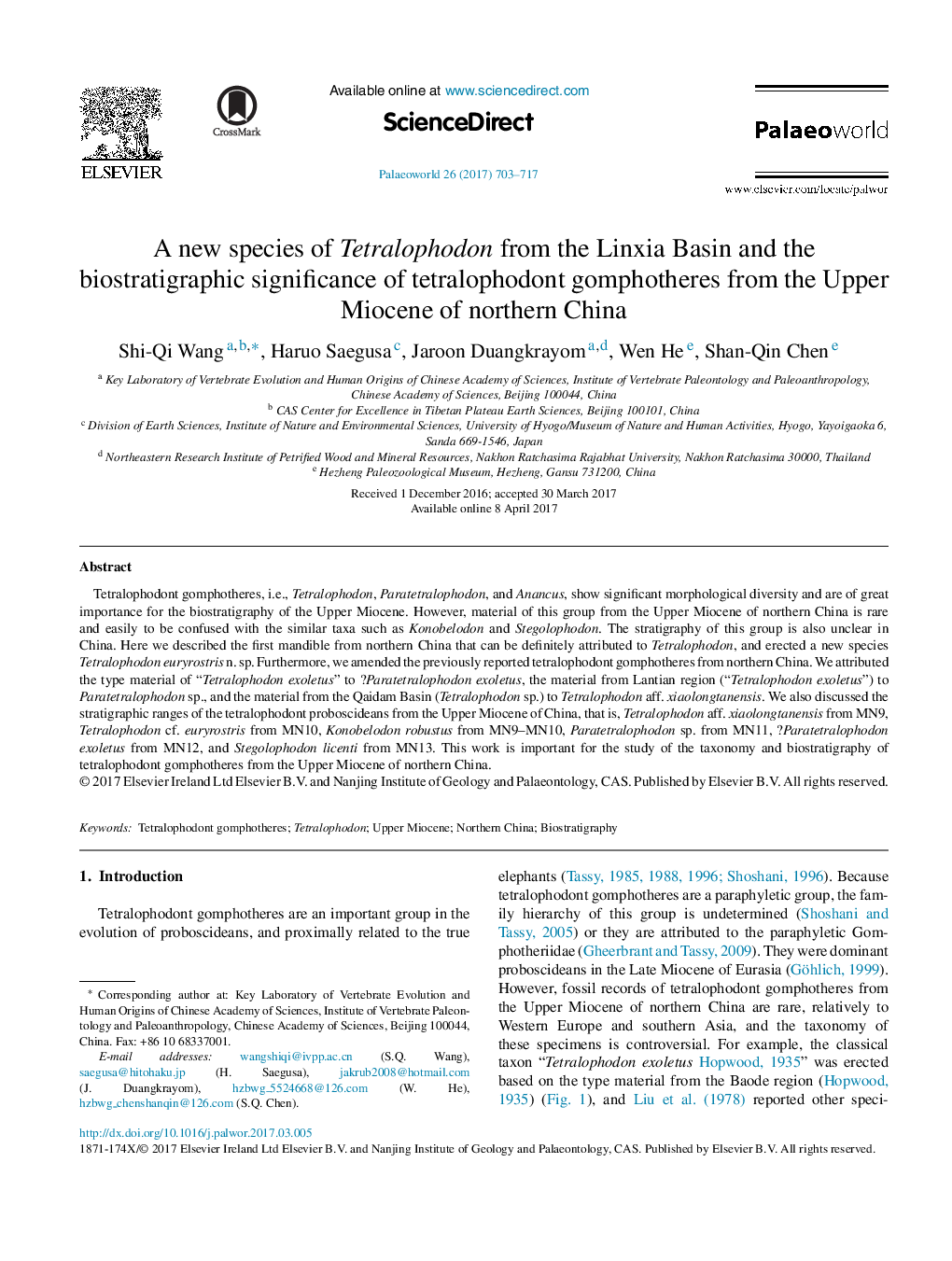| Article ID | Journal | Published Year | Pages | File Type |
|---|---|---|---|---|
| 8916573 | Palaeoworld | 2017 | 15 Pages |
Abstract
Tetralophodont gomphotheres, i.e., Tetralophodon, Paratetralophodon, and Anancus, show significant morphological diversity and are of great importance for the biostratigraphy of the Upper Miocene. However, material of this group from the Upper Miocene of northern China is rare and easily to be confused with the similar taxa such as Konobelodon and Stegolophodon. The stratigraphy of this group is also unclear in China. Here we described the first mandible from northern China that can be definitely attributed to Tetralophodon, and erected a new species Tetralophodon euryrostris n. sp. Furthermore, we amended the previously reported tetralophodont gomphotheres from northern China. We attributed the type material of “Tetralophodon exoletus” to ?Paratetralophodon exoletus, the material from Lantian region (“Tetralophodon exoletus”) to Paratetralophodon sp., and the material from the Qaidam Basin (Tetralophodon sp.) to Tetralophodon aff. xiaolongtanensis. We also discussed the stratigraphic ranges of the tetralophodont proboscideans from the Upper Miocene of China, that is, Tetralophodon aff. xiaolongtanensis from MN9, Tetralophodon cf. euryrostris from MN10, Konobelodon robustus from MN9-MN10, Paratetralophodon sp. from MN11, ?Paratetralophodon exoletus from MN12, and Stegolophodon licenti from MN13. This work is important for the study of the taxonomy and biostratigraphy of tetralophodont gomphotheres from the Upper Miocene of northern China.
Related Topics
Physical Sciences and Engineering
Earth and Planetary Sciences
Palaeontology
Authors
Shi-Qi Wang, Haruo Saegusa, Jaroon Duangkrayom, Wen He, Shan-Qin Chen,
